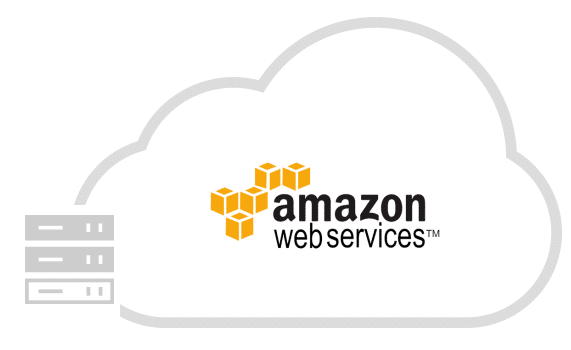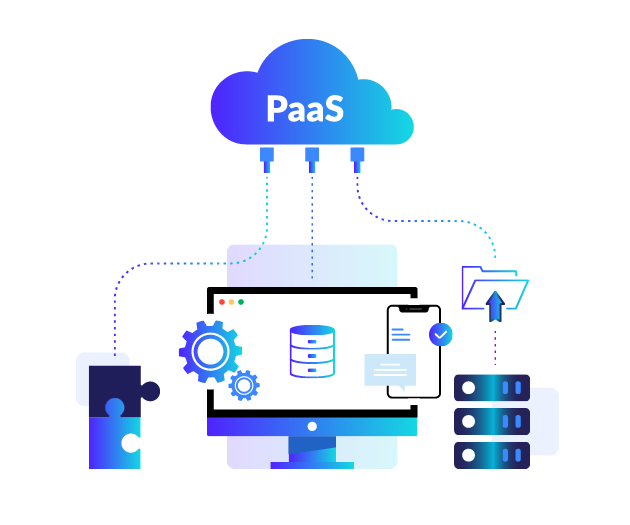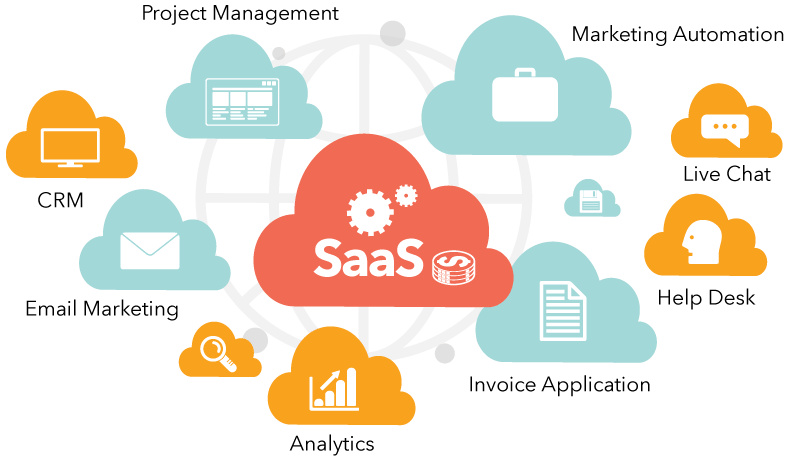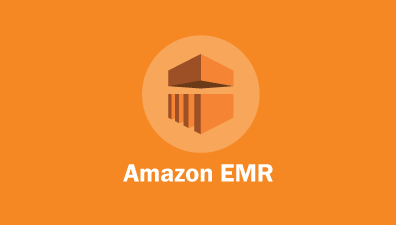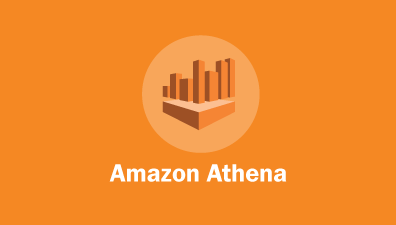Amazon is one of the large and well-known corporations headquartered in the United States. With ideas ahead of time utilizing the strengths of the internet, Amazon laid the foundations for the application of technology to operating companies, serving customers, and managing products. Now, Amazon is becoming more and more popular with businesses, especially in providing its services. Amazon services include solutions that use cloud technology to process and store data, helping to optimize the management and operations of many businesses.
The following article will give you an overview of Amazon Web Services (AWS) including AWS IaaS PaaS SaaS, as well as the applicability of these services in practice.
Table of Contents
Introduction about AWS
Amazon Web Services (AWS) is the most widely used public cloud computing platform across the globe and one of the pioneers of on-demand computing. Launched in 2006, AWS has soon grown to be a multi-billion dollar business, providing customers worldwide with access to more than 100 services from database management, serverless computing, and data warehousing to virtual ground stations for satellite communications.
There are numerous famous companies that have had their infrastructure successfully built on AWS including Splunk, Infor, Okta, Dynatrace, Crowdtangle, Zapproved, Pegasystems, Playauto, SendBird, Simscale, Airbnb, Nextdoor, Flatiron Health, Bambora.
AWS is PaaS or IaaS or SaaS. Each service of Amazon has its own merits and flaws and is suitable for the specific needs of a company. Let’s go into more detail about each one, beginning with IaaS AWS services.
AWS IaaS (Infrastructure as a Service)
What is AWS IaaS? IaaS or Infrastructure as a service is one of Amazon Web Services that focuses on providing infrastructure services based on cloud computing technology. It’s not difficult to name an organization that provides IaaS but among the top providers worldwide, AWS stands out as the front-runner for IaaS cloud services. It has clients in 190 countries and 66 available Zones within 21 geographic regions. IaaS Amazon Service is used to replace physical resources, such as servers, with virtual resources hosted and managed by Amazon. System users can run any operating system or application on these leased servers, without incurring any extra fees for maintenance and operation.
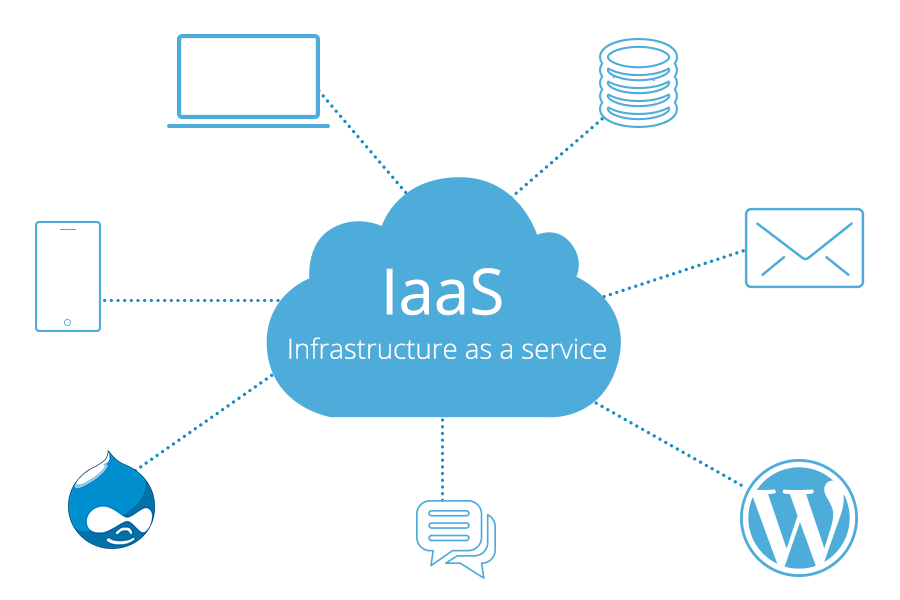
AWS IaaS helps businesses to digitize more quickly while allowing them to integrate all their data on a single platform. Additionally, it enables businesses to scale up and down at any given time to suit their needs. All these features make AWS IaaS a widely used platform by companies nowadays. Magento can be considered a typical example of IaaS in AWS.
AWS IaaS Benefits
- Availability of separate development environment
- Hardware and operating system specifications for the service can be selected and used directly from the network
- Allow expanding the resources of the server in terms of quantity and functionality
- No errors or extra costs arise while upgrading the system
AWS IaaS Characteristics
Characteristics that define IaaS include:
- Resources are available as a service
- Cost depends on the consumption
- Highly scalable
- Allow multiple users to access a single piece of hardware
- The organization has complete control of the infrastructure
- Dynamic and flexible
When to Use Amazon AWS IaaS
AWS IaaS is suitable for:
- Startups and small companies that want to avoid spending time and money in producing hardware and software.
- Larger companies prefer complete control over their applications and infrastructure, but want to purchase only what is needed for the app development.
- Companies with rapid growth potential like to keep altering hardware and software as per their demands for scaling up.
AWS IaaS Services Drawbacks
- Security threats that may arise from the host or other virtual machines
- Customer’s inability to access their data when vendor outages happen
- Required team training to learn how to manage new infrastructure
PaaS (Platform as a Service)
One of Amazon’s offerings includes PaaS. So what is AWS PaaS? This is a service that provides the foundation for developers to design apps. In its simplest sense, a third-party vendor will provide hardware and software tools to users over the Internet, and users will only need to handle the application design and development process. All hardware and software will be hosted by the PaaS service provider on its own infrastructure.
Among 3 Amazon service solutions that apply cloud computing technology namely Iaas Paas Saas AWS, PaaS plays an important role in simplifying the application development process on the web. With cloud technology, developers can access the platform data from anywhere. This can facilitate project development on a global scale. However, it also means that the developers will have less control over the application design environment.
PaaS Benefit
- Availability of application development environment which saves users a lot of time and money.
- Users don’t need to worry about platform maintenance and backup services which are entirely managed by cloud technology.
- The infrastructure is stored directly in the cloud, and users can always access it immediately.
- Save time developing applications thanks to existing cross-platform environments.
- Flexible development according to users’ need to use advanced software.
PaaS Characteristics
Consider the below characteristics will help you determine when PaaS is being utilized:
- Resources can easily be scaled up or down as your business changes.
- Provides a variety of services to facilitate the development, testing, and deployment of apps.
- Multiple users can access via the same development application.
- Able to integrate with web services and databases.
When to Use PaaS
If you are looking for a cost-effective and time-saving solution, PaaS can be an ideal choice. PaaS saves the developer more time to focus on the creative side of app development such as creating, testing, and deploying the app while not having to worry about managing software updates or security patches.
AWS PaaS Drawbacks
- Dependent on the provider’s functional capabilities, speed, and reliability.
- Compatibility problems may arise when existing infrastructure is incorporated into a new environment.
- Security risks due to its availability in the public environment.
SaaS (Software as a Service)
Apart from AWS IaaS Paas, Amazon also includes SaaS in its services. This Software as a service (also called Web-based software, on-demand software, or hosted software) is a software distribution model whose applications are hosted and made discoverable to the customers over the Internet.
When embracing this solution, you will have access to the application, along with its security, availability, and performance managed by the provider. SaaS is also one of Amazon’s web services favored by a large number of users worldwide because of the multiple benefits brought by it.
AWS SaaS Benefits
- Able to use directly over the network without having to install any software.
- All data can be stored on the Internet.
- Data can be accessed via any device, as long as an Internet connection is available.
- Multiple users can access the same data warehouse.
- Quick setup and operation of advanced applications.
SaaS Characteristics
Below are characteristics that define Saas as a cloud service:
- Managed from a central location.
- Hosted on a remote server.
- Accessible over the internet.
- Users have the hardware or software updated by the provider.
When to Use Saas
SaaS should be used by:
- Startups or small companies that wish to start running their eCommerce site quickly and have little time for server issues or software.
- Companies that prefer quick, easy, and affordable collaboration.
- Companies with infrequently used applications such as tax software.
- Companies that want to provide both web and mobile access for customers.
AWS SaaS Drawbacks
- Difficult to integrate with existing apps and services.
- Security risks due to its availability in the public environment.
- Limited customization capabilities.
- Loss of operational control which affects how PaaS solutions are managed, provisioned, and operated.
Wrapping up: Is AWS PaaS, IaaS, or SaaS the Best Option to Choose?
Now that you’ve grasped the basic knowledge of Amazon Web Services, you may wonder: which Amazon Web Service is the right fit for your company: AWS Iaas or PaaS or SaaS?
In general, each cloud model provides particular features and functions. To make the right choice, the company or business needs to understand the differences between these services.
Regarding the level of complexity, some cloud computing server models are more complicated than others. Specifically, the level of system administration knowledge gradually decreases as follows: Amazon IaaS > PaaS > SaaS.
As for the offering of features, the three Amazon Web Services IaaS, PaaS, and SaaS are distinguished from each other in which:
- IaaS offers the highest flexibility for hosting custom-built apps, as well as a general data center for storing data.
- PaaS allows you to invest more time in developing the application while having the infrastructure managed by the provider.
- SaaS provides solutions that are ready to use and out-of-the-box to suit a specific business requirement.
Hopefully, the above article has given you a thorough knowledge of each Amazon Web Service and how they are different. Whether it is AWS IaaS, PaaS, or SaaS that you choose to deploy for your business, making the early migration to the cloud can bring you a huge advantage over the competitors that are busy doing things the old way. If you want to gain more insights about these technologies and receive the latest news about the eCommerce market, please feel free to subscribe to our newsletter.


